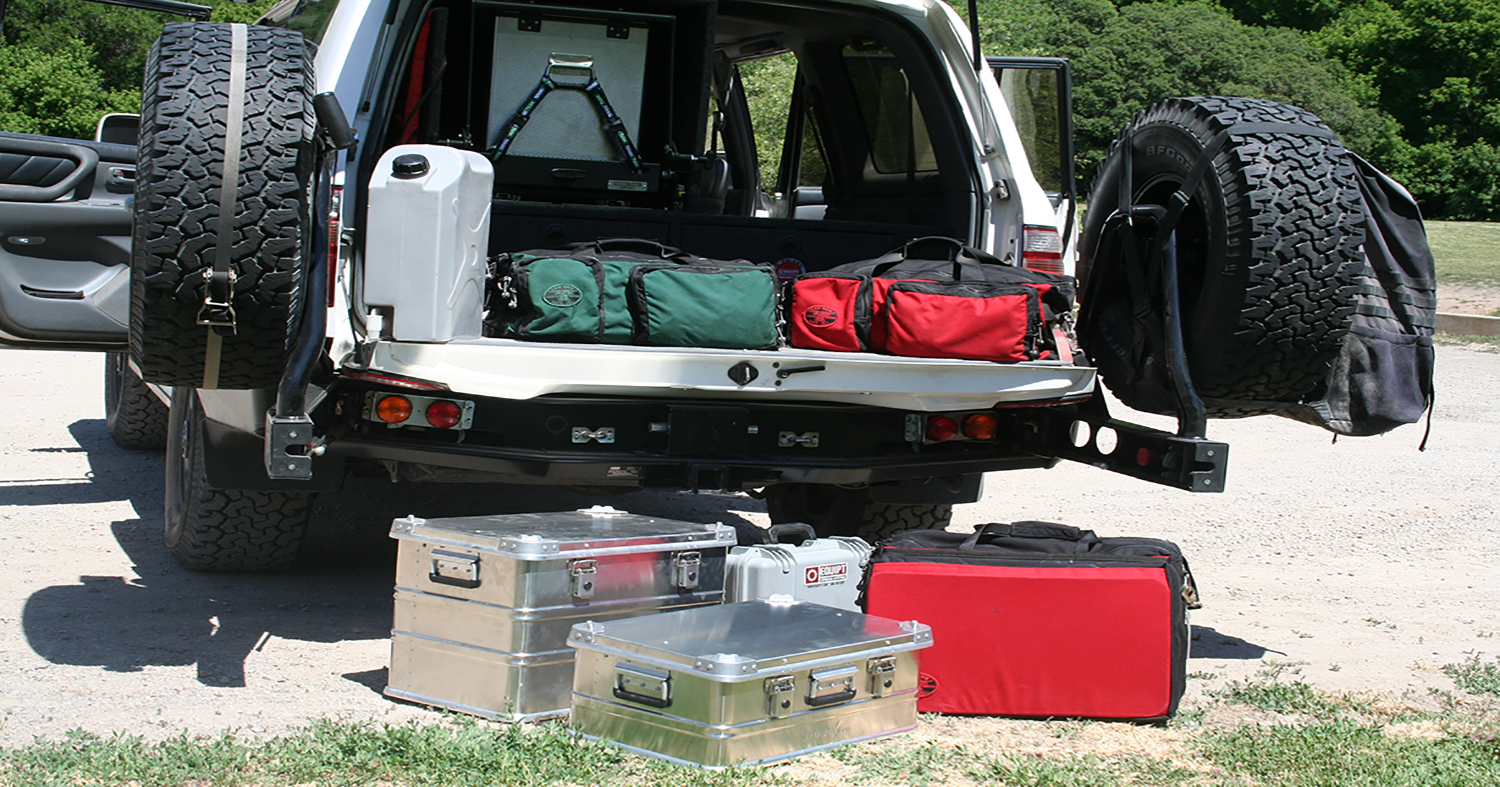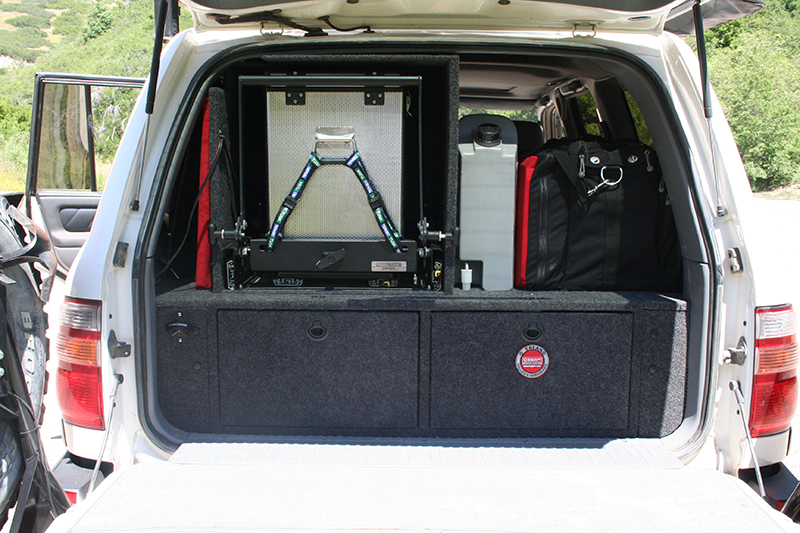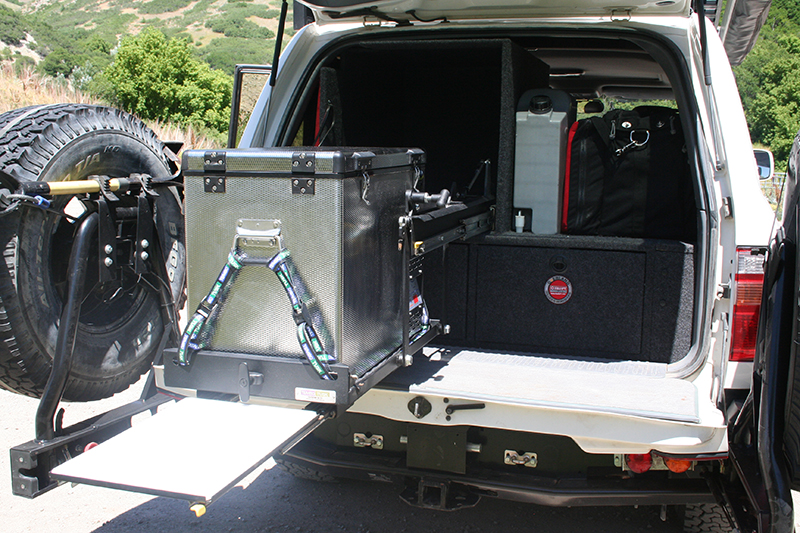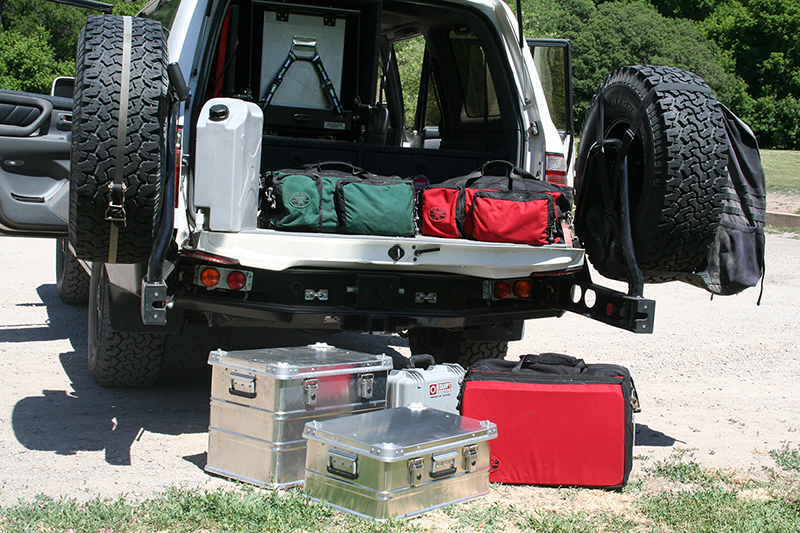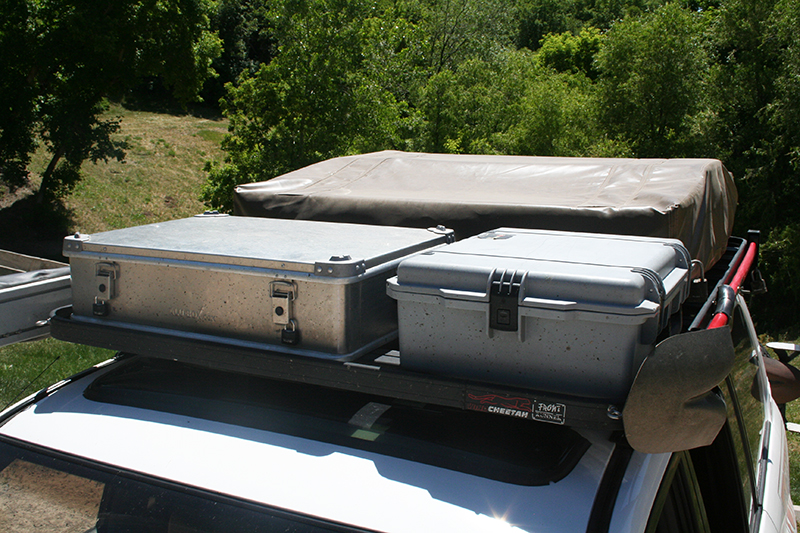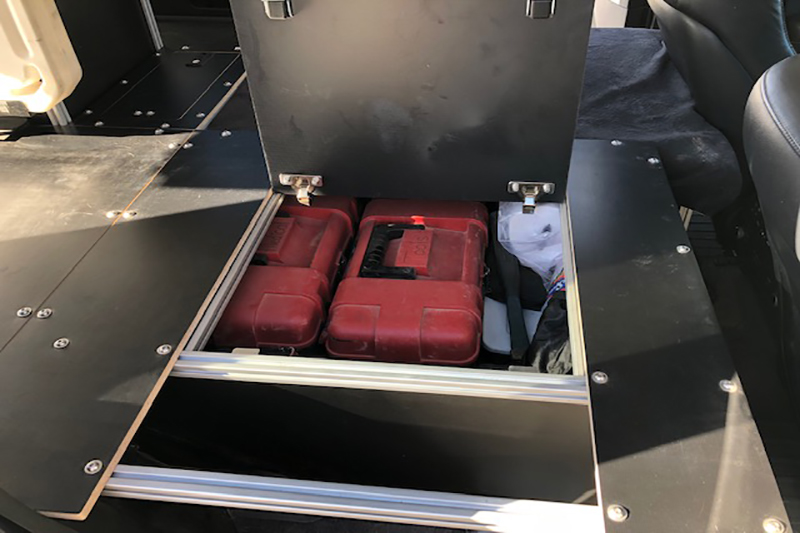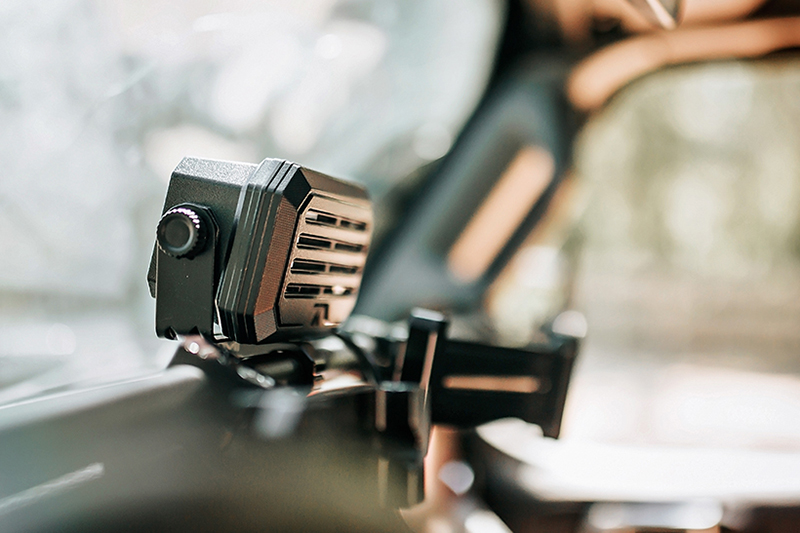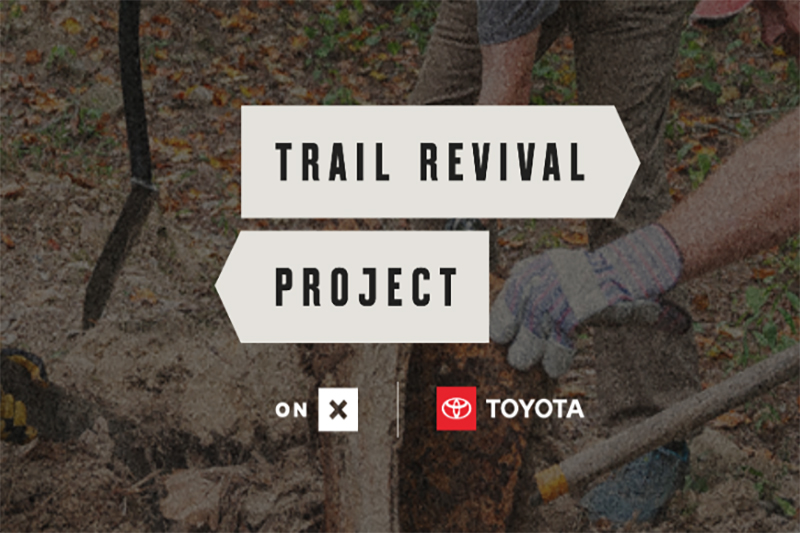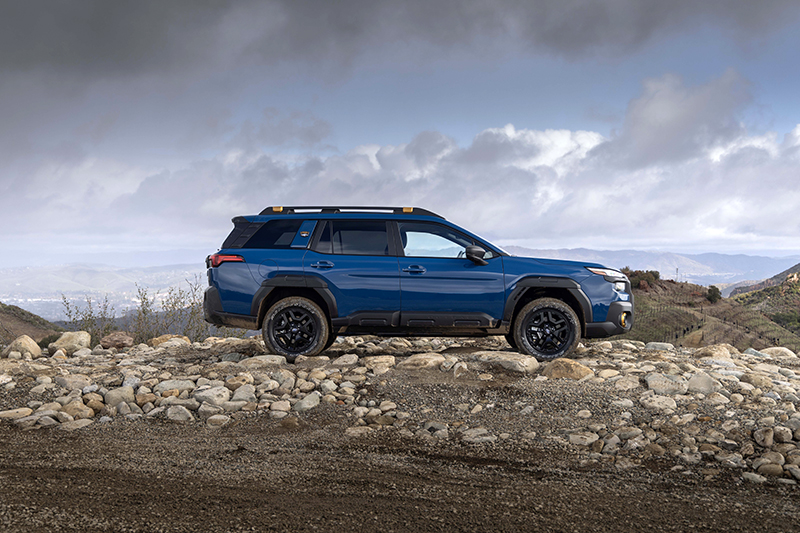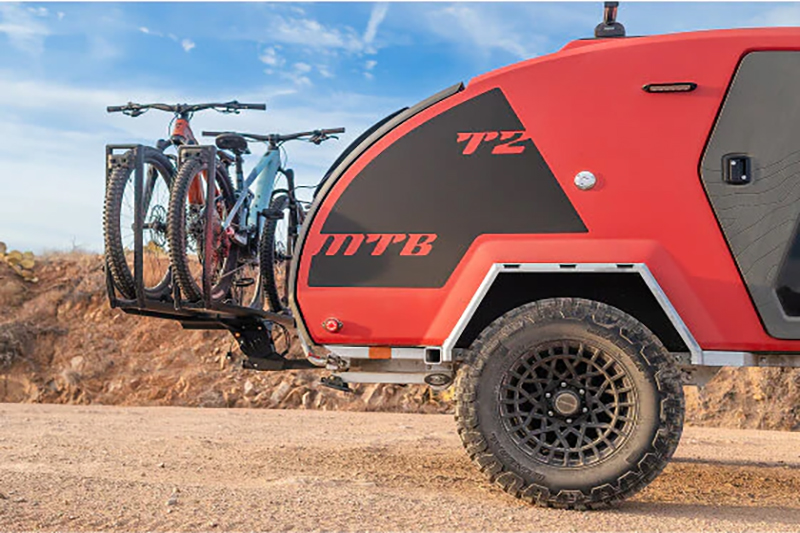Considerations for packing and preparing your vehicle for overland and outdoors adventure
Properly packing a vehicle for your next overland adventure is more than being able to put 10 pounds of stuff in a five pound bag. Or making sure you don’t look like the Clampetts from Beverly Hillbillies rolling down the highway. It is about preserving your assets. The ultimate goal is to make it back home as your vehicle is your family’s lifeline. So the keys to a proper packing job have more to do with safety and performance than your Tetris skills. Here are a few tips to keep in mind next time you’re getting loaded.
Know your limits
Every vehicle has its limitations, and it is your responsibility to know them. Find your vehicle’s GVW or Gross Vehicle Weight. Weigh your vehicle and subtract that from the GVW. This will give you an idea of the amount of gear and crew you can safely transport. Modifications to your vehicle to increase capacity are possible. Suspension, drive train and tires are the obvious changes, but remember they have limitations as well. The best modification you can make is in your driving habits. A fully loaded truck will accelerate, turn, and brake a lot slower than an empty truck.
Center of Gravity
Overlanding adventures take us off the beaten path. We enjoy finding the road less taken, and those roads tend to be a bit more technical than the highway. Steep ascents, off camber corners, and uneven terrain are all part of the fun. Primary to safe travel with a fully-loaded truck is a low center of gravity. Consider the gear you are bringing with you and pack the heavier equipment as low as possible. Not only low, but to the center of the vehicle as you can. Aim for a 50/50 front/rear ratio. The cantilevered effect of too much weight in the back of a vehicle in a steep ascent can be very dangerous. It loads the axles disproportionally, affecting your traction, steering, and braking capacity. Remember: heavy gear goes low and forward.
Staging
Stage your equipment based on frequency of use. The items you use all the time should be easily and quickly found, while the items you won’t need often should be stored in the harder to reach places. Think through your activities too. Will you need the same thing on day six as you needed on day one? Should your recovery gear go on top of your lunch prep gear? Load your food according to itinerary, placing meal plan items together.
Do the same with your fridge, with the last night’s meal on the bottom. Compartmentalize your gear too. Pantry, Kitchen, clothes, chairs. Consider dedicating storage cases and kits for different applications. Decide where you use what gear. Clothes in the side door, kitchen and fridge in the back, etc. Each time you use something, return it to the same place. That way the entire team will know where to look.
Finally, and perhaps most importantly, leave the equipment you don’t need back at home. Every item in your vehicle should be there for a purpose. Just because you have the room does not mean you should fill it. The less you take, the lighter your vehicle, the safer and more efficient it becomes, and the easier it is to get to the things you did bring.
Everything is a weapon
Everything you put in your vehicle is a weapon, and they are all out to get you in an accident. It only takes a matter of seconds to turn your tidy rig into a roadside yard sale. A tent pole or a shovel flying through a vehicle can do some damage. Proper lashing of your equipment inside the vehicle can save your life and the lives of others with you. Tie it down by either fixed point locations or by adjustable track. Barricades, nets, straps, or bungees are viable options to keep thing in their place. Again, remember heavy gear goes low and forward.
Nice Rack
Roof racks are a great piece of equipment to have. They increase capacity and alleviate the storage pressure inside. But they can also cause problems if not used appropriately. They are best used for light and bulky items like bedding and clothes. Even items such as shovels, axes, weather tight cases and roof top tents are fine. Think of it this way. A roof top tent is roughly equal in weight to three jerry cans of fuel or water, but takes up a great deal more space. Consider the effect of adding to your roof in terms of center of gravity, wind resistance, and fuel economy. Weigh the options and decide if the roof is the best option for you.
Customized Interior
Once you have a good idea of what and where things work best for you, consider customizing the interior of your vehicle to suit your needs. Drawer systems, fridge slides, and storage compartments are all possible. Even elaborate systems like on-board hot water and compressed air, power inverters, etc. The possibilities are only limited by your space and imagination. Storage systems are great for organization and secure transport, but they take up a lot of space on their own. It is something to consider before committing to a complete system.
– For more tips on 4×4 adventure travel, or to purchase items for your next 4×4 adventure, visit Equipt Expedition Outfitters by clicking or tapping HERE.
OutdoorX4 Magazine – Promoting responsible vehicle-based adventure travel and outdoors adventure


